Dear Family and Friends,
Happy Lunar New Year! 🐉
From August to December 2023, we returned to Asia for the first time in 5 years and traveled to China, Thailand, and Indonesia. Most importantly, we visited Yuxi’s family in Wuhan, China.
Growing up, Yuxi was very close to her Laolao (maternal grandmother in Chinese), who helped raise her from kindergarten to 6th grade. During the pandemic, China's borders were closed to foreigners, so we could not see Laolao or any of Yuxi's extended family. We planned to visit as soon as China opened its borders, but Laolao passed away at the end of 2022. We hoped to pay our respects at Laolao's grave on her birthday in August 2023. Thankfully, the border opened in time.

Our 6 weeks in China were split into 3 parts:
Family time in Wuhan
Paying homage to Laolao on sacred Buddhist mountains
Trip to Yunnan province with our friends Nick and Yvis
Family time in Wuhan
Spending quality time with Yuxi’s extended family consisted of many delicious meals at local restaurants, and conversations in cozy living rooms.

We talked about life during the pandemic, how exciting it was to travel inside China again, the Chinese economy, and our nomadic life. To our surprise, Yuxi’s paternal grandparents expressed genuine support for our nomadic lifestyle, encouraging us to explore the world while we are still young. We felt grateful for their vote of confidence.
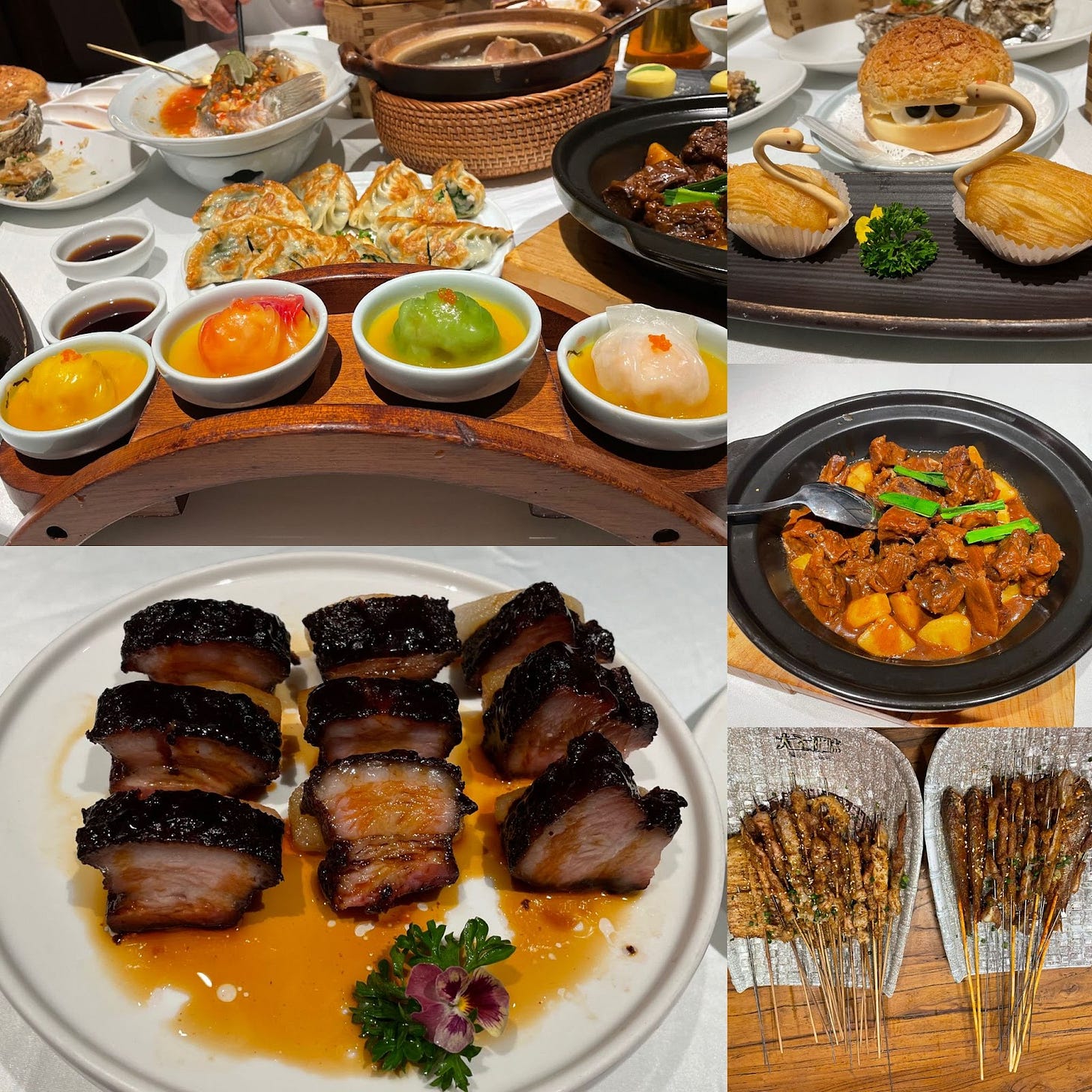
On Laolao’s birthday, we traveled with Yuxi’s aunt to Laolao’s grave to pay our respects. We burned paper money along with photos of our wedding and letters Yuxi wrote to her in the 100 days after her passing.
Laolao was a devout Buddhist, and spent extended periods of time as a monk in several temples. In Wuhan, she stayed at the Gude Temple (古德寺), a historical Buddhist temple known for its unique architecture, which draws elements from Gothic, Roman, Burmese and Indian lineages.
Before leaving Wuhan, we took a weekend trip to Jingdezhen with Yuxi’s paternal aunt and uncle. Jingdezhen was the imperial capital of porcelain production during the Ming and Qing dynasty. It is here that the “china” for which China became famous was born.
Sacred Buddhist Mountains
In China, millions of people go on pilgrimages to the four sacred Buddhist mountains each year. But rarely does anyone go to all four mountains in the same year. Each mountain is hard to get to, and all four are far from each other.
We ambitiously set out to go to all four mountains in less than a month. The order we had planned was:
Mount Jiuhua, located closest to Wuhan (our starting point), in Anhui province
Mount Putuo, located in the far east, off of the coast of Zhejiang province
Mount Wutai, located in the northern region of China, in Shanxi province
Mount Emei, located in the western region of China, in Sichuan province
The shape of the overall route resembles a mountain peak, a fitting symbol for our journey to climb the four sacred Buddhist mountains.
The four mountains are dedicated to the Four Great Bodhisattvas of Chinese Buddhism, which is a form of Mahayana buddhism. Each mountain is viewed as the Bodhimanda, the place of achieving enlightenment, of one of the four great bodhisattvas.
Mount Jiuhua
Mount Jiuhua is dedicated to the Dizang ”地藏“ Bodhisattva, who is known for his association with the Buddhist underworlds, and the virtue of filial piety.
We were at Mount Jiuhua during a special religious holiday, where many Chinese Buddhists came to pray to the Dizang Bodhisattva to send blessings to their deceased ancestors and loved ones.
In addition to its religious importance, Mount Jiuhua is also famous for its natural beauty. Most of the 99 temples are built atop steep granite mountains, overlooking thick pine forests.
The highest temple, Tiantai Temple, is located 1306 meters (~ 4300 feet) above sea level. Stone stairs form a winding path for devout visitors to reach the top. The climb took Yuxi around 3 hours, with stops to pay respect at the temples along the way. Meanwhile, Will was recovering from a cold, which would become an unfortunate theme of our trip (more on that below).
Workers carry most of the supplies to the mountaintop in giant sacks attached to each end of a bamboo pole balanced on one shoulder.
Mount Putuo
To reach the second Buddhist mountain, Mount Putuo, we spent 12 hours in 4 different modes of transportation. We took a taxi, a high-speed rail, a ferry and two buses. It was even harder than we expected, especially since Will was still not feeling well.
Mount Putuo is dedicated to the Guanyin ”观音“ Bodhisattva, who is known as the “Goddess of Mercy” for her compassion towards all beings.
Mount Putuo is on an island. Mountain bluffs provided dramatic sea views. We could hear the ocean waves at some of the temples, which contributed to the calming, spiritual ambience.
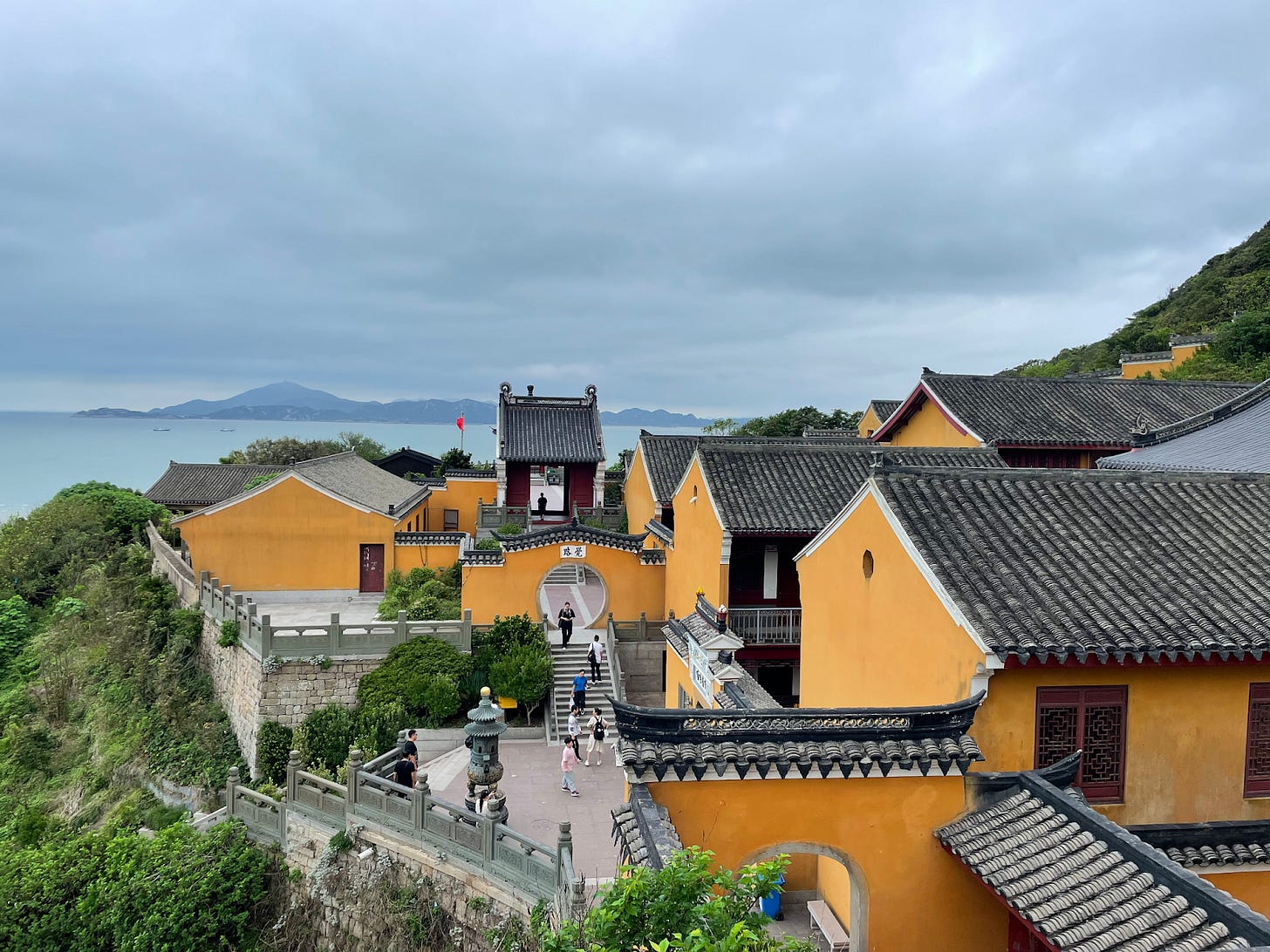
The lotus flower is a symbol of purity in Buddhism, and Chinese culture. The phrase “出淤泥而不染”, which can be translated as “to remain untainted in spite of the mud,” is commonly used to describe the lotus flower as well as someone’s noble character despite difficult circumstances.
We saw many lotus flowers at each of the Buddhist temple complexes, but the lotus pond at Mount Putuo was most memorable for its abundance and radiance.
Mount Wutai
We flew to Beijing from Mount Putuo for a short stay to see family and friends. Will finally fully recovered from being sick by the time we reached Beijing, just in time for Yuxi to fall sick herself.
Once Yuxi rested for a few days in Beijing, we felt that the fresh mountain air of Mount Wutai could help Yuxi recover. So we decided to continue our pilgrimage, with Yuxi’s maternal aunt.

Mount Wutai is dedicated to the Wenshu ”文殊“ Bodhisattva, who is known as the Bodhisattva of wisdom. It was the first sacred mountain to be identified, and often referred to as “first among the four great mountains”. It was inscribed as a UNESCO world heritage site in 2009.
Mount Wutai is home to over 50 monasteries, most of which are located at the base of the mountain. It rained almost every day during our stay. The rainy haze added a feeling of melancholy and somberness to the atmosphere.
Mount Wutai’s name means “five mesas”, owing to its geological features of having five flat mountain peaks, one in the middle and four in each cardinal direction. On clear days, visitors could see all five mountain peaks from any one of the mesas.
We were not so lucky with the weather when we visited the Southern mesa. The farthest sight we caught were horses on nearby hillsides, with a thick fog in the backdrop.
Oldest Wooden Temples of China
The highlights of our Mount Wutai trip were visiting the oldest wooden temples in China, Foguang Temple and Nanchang Temple. They are tucked into the hills of a remote town, 200km away from the main monasteries. Because of this isolated location, these two temples survived the Cultural Revolution unscathed. During the Cultural Revolution, (1966-1976), many ancient temples were damaged in an attempt to throw off the perceived restrictions of China's past and embrace new socialist virtues.
Of all the temples we visited, we enjoyed Foguang temple the most. We arrived early in the morning and walked around the compound in a meditative quiet atmosphere. We enjoyed contemplating the architectural significance of the temple, and how its history intertwined with China's turbulent past over the last century.
The major hall of Foguang temple was built in 857 AD during the Tang dynasty. It was rediscovered in 1937 by Chinese architecture historians Sicheng Liang and Huiyin Lin, who searched all over China from 1933 to 1937 to find and document ancient Chinese architecture.
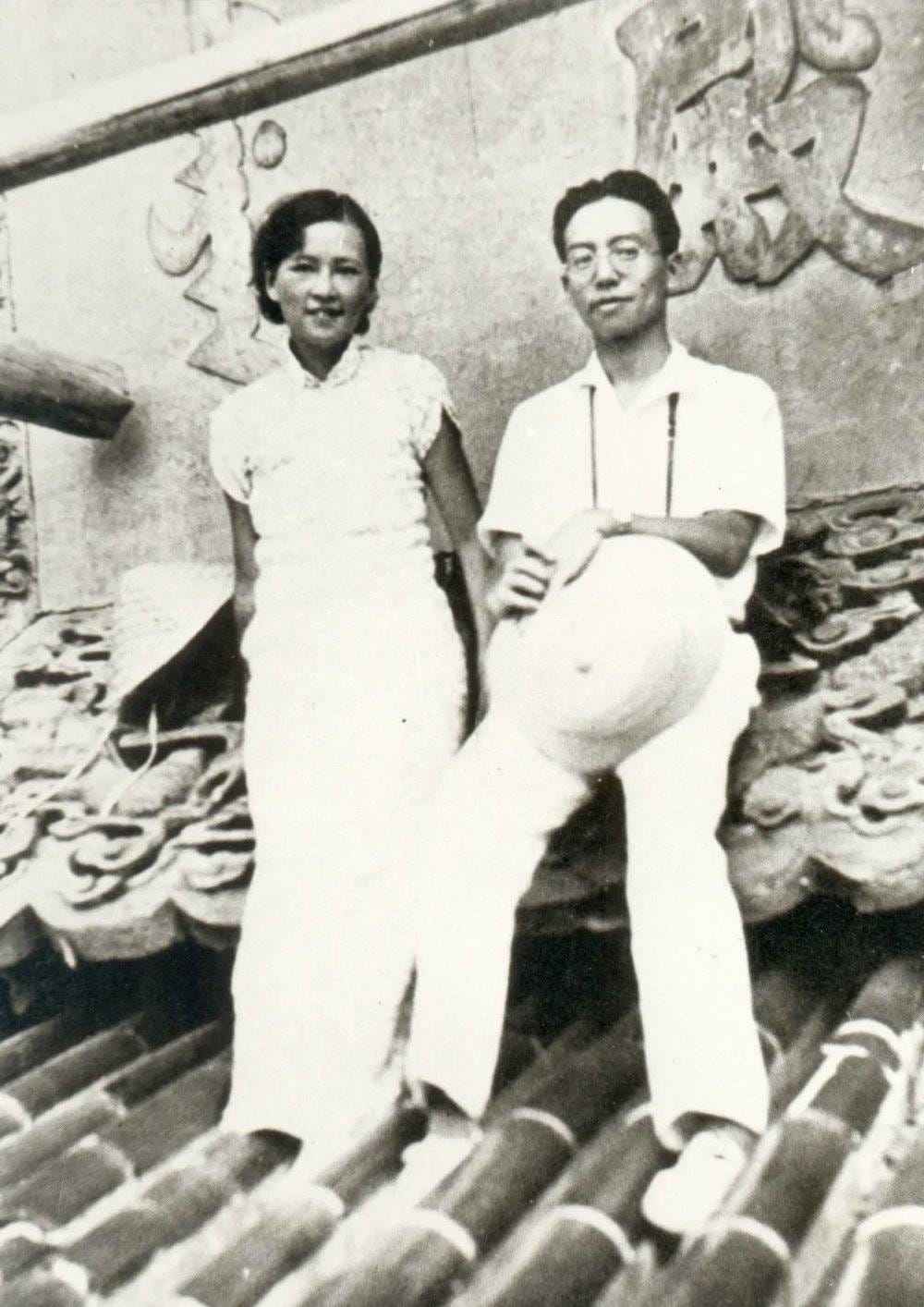
Many of the buildings they found have since been destroyed and now only exist in the records Liang and Lin had painstakingly preserved. Their achievements were even more impressive given the difficulties they overcame to find and document China's ancient architecture. They had no official records of historic buildings to reference. Instead they often had little more to guide them to the temples than rumors and local legends. They braved flooded roads and bandits to find temples throughout China's countryside. They also had to struggle with the disruptions of war. Japan had just invaded China when they began their search.
Moreover, Japan claimed to have the only remaining wooden structures from the time of the Tang Dynasty (618-907 CE). This claim was seen as a challenge to China's cultural and historical preeminence in East Asia, at a time when Japan was also trying to subjugate China militarily.
Despite all the hardships, Liang and Lin persisted. They were proud to find Foguang Temple and Nanchan Temple to refute Japan’s claim. Leveraging their field notes and photos, Liang authored the first modern history book written on China’s architecture.
One key architectural element of the Tang dynasty is the large size of the “dougong” (斗拱), an interlocking bracket system that supports the roof and creates majestic eaves. The “dougong” of the major hall at Foguang Temple extends outward by 3.96 meters (~13 feet).
For contrast, this “dougong” is 5 times the size of the same structure at the Hall of Supreme Harmony inside the Forbidden City, which was constructed during the Qing dynasty, more than 500 years after Foguang Temple was built.

The last temple we visited was Nanchan temple, dated back to 782 AD, 72 years earlier than Foguang temple. It is simpler in construction, but also has large “dougong” that stretch outward, giving the temple an impressive wingspan.

Our pilgrimage to the four Buddhist mountains ended here. If you’ve been counting, you will have noticed that we only mentioned 3 of the 4 sacred mountains. We didn’t make it to the fourth mountain, Mount Emei. At the end of our Mount Wutai stay, Will, having nursed Yuxi back to health, got sick again. Struggling with this third bout of sickness, we decided that we needed rest and that Laolao would not have wanted us to visit the fourth mountain at the expense of our health.
Our trip to Wuhan helped us reconnect with Yuxi’s family, and reacquaint ourselves with life in China. The time we spent at the three sacred Buddhist mountains helped Yuxi grieve for Laolao.
After resting for a few days, we met up with our friends Nick and Yvis for a long-awaited trip to Yunnan province, which is known for its natural beauty and laid-back culture. More about this to come in the next newsletter!
Miscellaneous recommendations
Liang and Lin: Partners in Exploring China's Architectural Past by Wilma Fairbank
Mount Wutai B&B: 听山民宿 (listing on Ctrip is in Chinese)
An inside look into alternative education in China (Yuxi’s observations from visiting a school that embraces self-directed learning to the fullest)
With love,
Yuxi and Will
Contributors:
Writer-in-Chief: Yuxi
Editor-in-Chief: Will







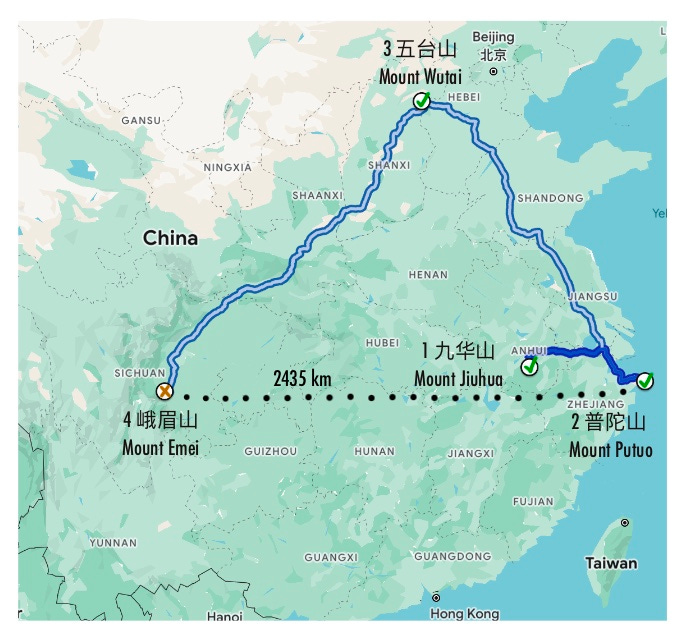


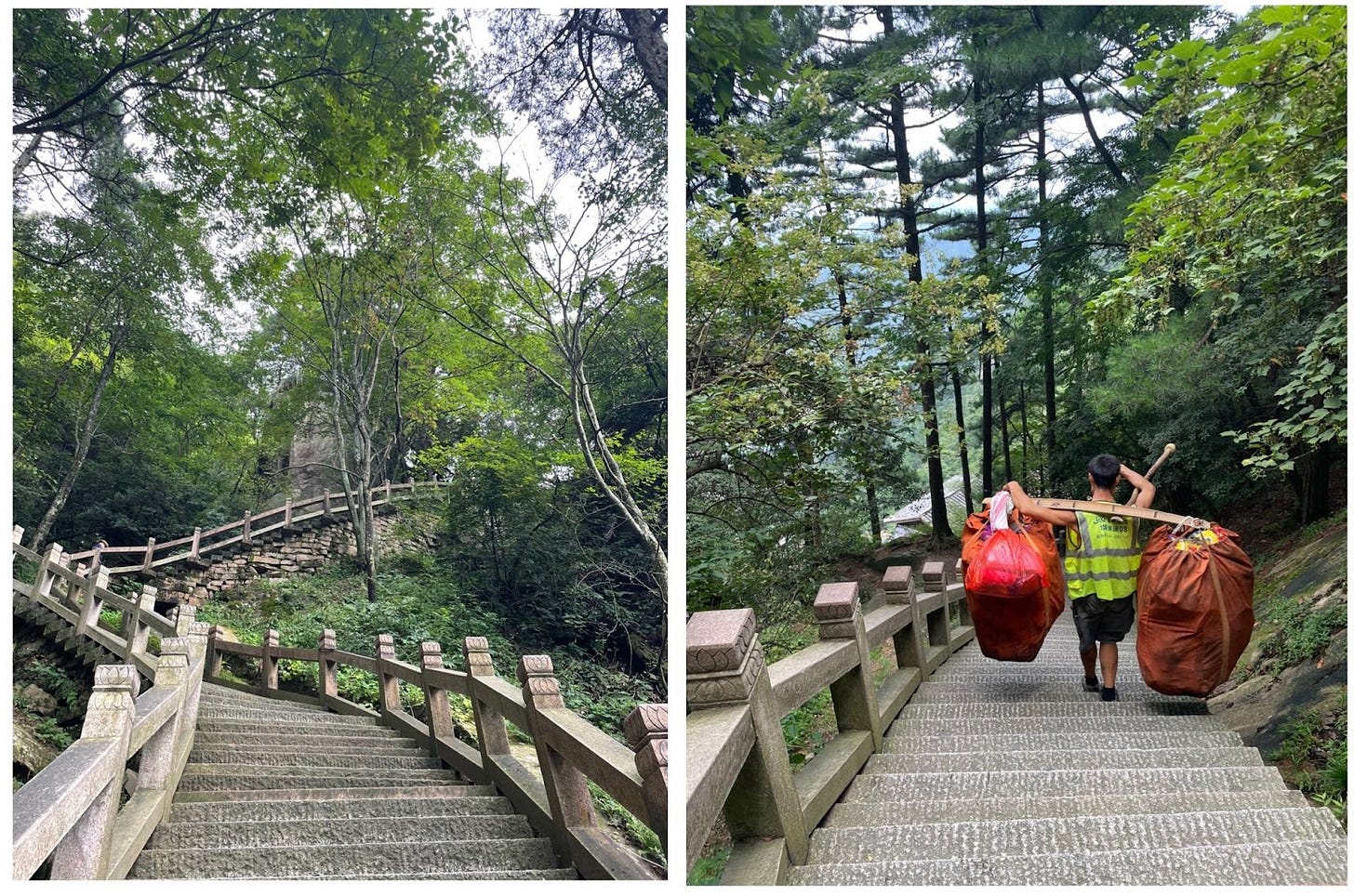


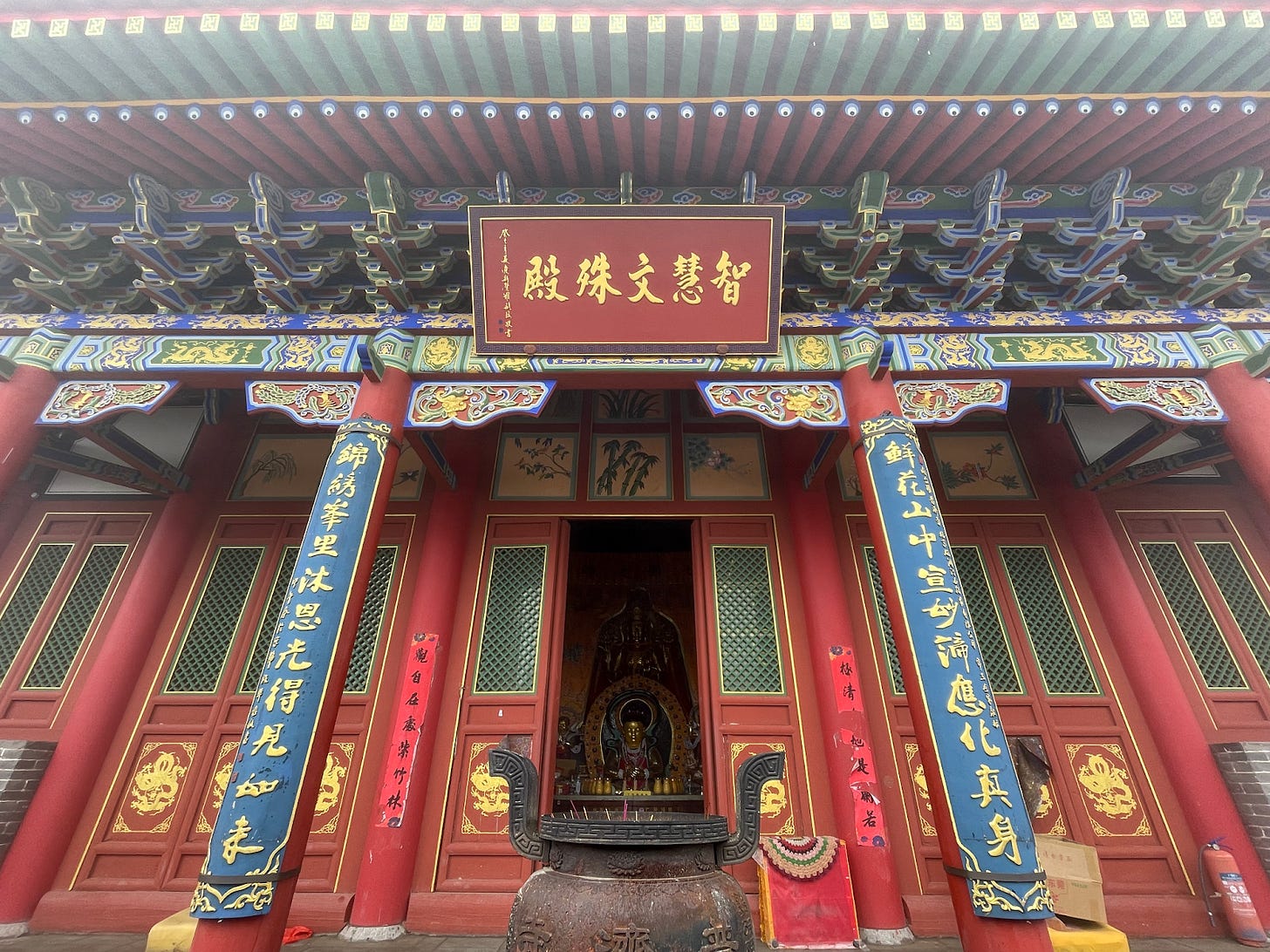




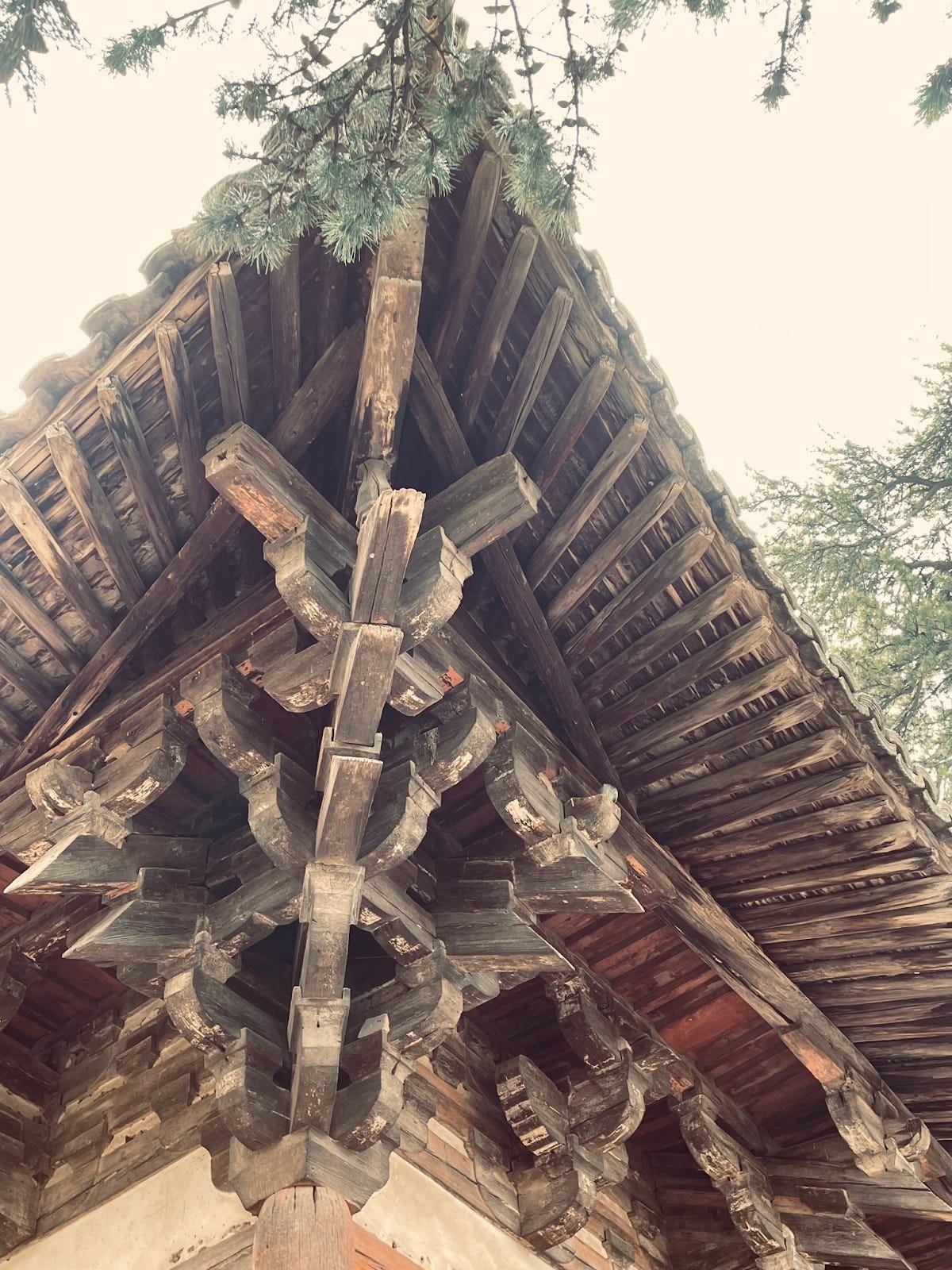


Loved reading about your latest adventure, Yuxi! What a beautiful way to honor your grandmother.